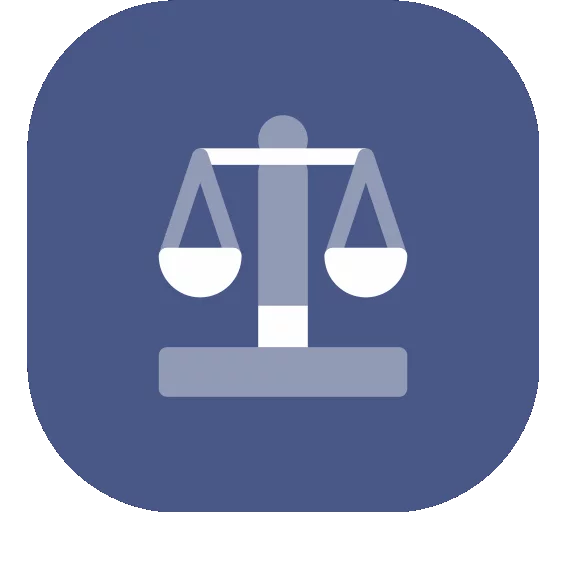Effective Strategies to Measure SEO Success and Improve Your Results
How do site owners measure SEO success? These 9 metrics are key to tracking and benchmarking your SEO efforts.
Understanding the impact of SEO on a brand’s online presence is imperative in today’s digital marketing landscape.
Measuring SEO success is the process of analyzing the effectiveness of your digital marketing strategy in driving organic results. It’s not just about observing a surge in search engine rankings; it’s about considering relevant data points to assess the value brought to a company.
A meticulous approach to tracking, analyzing, and refining search engine optimization efforts ensures that businesses can align their digital presence with their growth objectives. Keep reading to unveil the intricacies of measuring your SEO success, and learn how to turn data into actionable insights with LinkGraph.
Understanding SEO Metrics and Their Impact

SEO metrics are the data and analytics that measure a website’s performance on the search engine results page (SERP). The effectiveness of your SEO campaign hinges on implementing best practices and measuring the efficacy of your efforts.
Measuring the performance of your SEO efforts requires sifting through data to evaluate which metrics matter most. With this information, you’ll want to align the key indicators with the overarching business objectives to ensure that every effort translates into tangible growth and a robust return on investment.
The indicators encompass a range of data points, like:
- Keyword rankings.
- Organic search traffic.
- Bounce rates.
- Conversion rates.
- Click-through rate (CTR).
Measurement tools like LinkGraph’s SearchAtlas SEO software provide an extensive suite of metrics that reveal the health of a website’s SEO strategy. With the analysis, you can identify SEO issues, measure content performance, and track the growth in organic search relevance—each an integral component in the quest for SEO success.
Determining which metrics carry the most weight in an SEO strategy involves an approach that ties SEO performance to business results. Considerations include the relevancy of target keywords, the quality of backlinks supporting the site’s domain authority, and the conversion rate that translates visits into business outcomes.
LinkGraph’s SEO services recognize this necessity, providing a platform through which performance can be charted against business milestones:
- LinkGraph’s team aligns search engine optimization strategy with client-specific revenue targets, ensuring that key performance indicators such as conversion rates are always driving toward financial objectives.
- Through ongoing SEO audits and conversion tracking methodologies, LinkGraph’s SEO experts adjust campaigns and maintain a steady course for maximizing return on investment (ROI).
Setting up Tools to Track Organic Traffic and Measure SEO
To measure SEO performance, you must utilize the correct tools to track and analyze organic traffic. To make this process easier, choosing a platform that offers comprehensive insights and user-friendly reporting, like LinkGraph’s SearchAtlas, is indispensable.
With a focus on setting up these tools to reflect accurate data, businesses can monitor organic traffic growth with precision, ensuring that SEO initiatives are driven toward the goals.
Choosing the Right Analytical Tools
Identifying the most effective analytical tools is a cornerstone of any SEO strategy. Decision-makers must choose tools like SearchAtlas, which harmonizes comprehensive tracking features with understandable, actionable reports.
LinkGraph’s platform, with its integrated suite of tools for white-label SEO and backlink analysis, helps businesses capture and leverage detailed SEO performance data. These tools drive an informed strategy and provide insights including:
| SEO Metric | Tool Feature | Business Impact |
| Keyword Ranking | Rank Tracking | Direct correlation with search visibility and user acquisition |
| Backlink Quality | Link Analysis | Assessment of domain authority and referral traffic potency |
| Organic Traffic | Traffic Source Monitoring | Gauges audience engagement and content efficacy |
| Conversion Rate | Conversion Tracking | Conversion tracking links SEO efforts to revenue generation |
Configuring Tools for Accurate Data
After choosing your SEO monitoring tools, your next step is to configure them to measure SEO results effectively. After all, your team needs accurate data to take action. SearchAtlas exemplifies precision tracking, enabling the configuration of parameters to ensure data integrity and relevance to the SEO campaign’s objectives.
Tailoring alert systems, custom filters, and report settings within the software ensures that businesses are receiving the right data to inform and steer their SEO initiatives. LinkGraph’s expertise in SEO tracking translates to data-driven decision-making.
Monitoring Organic Traffic Growth
Monitoring organic traffic growth is an indispensable element in assessing the health of an SEO strategy. SearchAtlas aids in this endeavor by providing thorough data on user visits, behavior, and interaction with web pages.
With the precision offered by LinkGraph’s sophisticated SEO tools, businesses can effectively track the trajectory of their organic traffic. This approach ensures that increases in search engine visibility translate into improved engagement.
Analyzing Keyword Performance and Trends

Another important element in measuring SEO performance is analyzing keywords. The process yields valuable insights into user intent and search habits, which can be used to refine and steer SEO strategies effectively.
Keywords are the words and phrases users enter into search engines like Google. In an SEO plan, your goal must be to rank high for strategic keywords for your business. To do so, it’s necessary to incorporate relevant keywords into website content.
Identify the Target Keywords
Effective SEO requires the identification of target keywords that reflect the core offerings of a business and match the searcher’s intent. This is possible through keyword research that considers the following:
- Search volume.
- Competition level.
- Relevance to your target audience.
- Content marketing strategy.
SEO strategists must conduct in-depth keyword research to identify the target keywords with the highest potential for driving qualified traffic. From there, they can determine the direction of the SEO content strategy and optimize the website’s landing pages to meet the needs and interests of the intended audience.
Track Rankings
After identifying and selecting the target keywords, measuring your SEO performance requires tracking keyword rankings. Tools like SeachAtlas provide insights into how your website is performing in search engine results pages for your chosen keywords.
It’s worth highlighting that Google’s PageRank algorithm is constantly analyzing content and measuring its importance and relevance for each keyword. This means that your position in the SERP might change regularly.
Tracking this will help you identify areas for improvement and make data-driven decisions to optimize your content for better visibility. With a watchful eye on SERP positions through tools like SearchAtlas, businesses can anticipate and adjust to shifts in the digital ecosystem.
Measuring SERP Visibility and Brand Presence

Your SERP visibility and online brand presence are two important elements in your SEO metrics. Securing a prominent position on the search engine results page is a good performance indicator for your strategies and can help with lead generation.
Understand SERP Features
Understanding SERP features is key for SEO professionals aiming to enhance a brand’s online visibility. Recognizing elements such as featured snippets, local packs, and knowledge panels can be the difference between a user clicking through to a site or bypassing it entirely.
At LinkGraph, the team’s knowledge of these features allows for agile adjustments to SEO strategies, like:
| SERP Feature | Visibility Impact | SEO Strategy Adjustment |
| Featured Snippets | Enhances top-of-page presence | Optimize content for direct answers |
| Local Packs | Targets region-specific audience | Strengthen local SEO practices |
| Knowledge Panels | Builds brand credibility | Improve entity information across the web |
Track Visibility in Search Results
Once you have a better understanding of the SERP features, you can track the visibility in search results and your digital market share. This can be done by monitoring organic search traffic, identifying trends over time, and analyzing metrics like keyword rankings and click-through rates.
Considering these elements when measuring SEO efforts gives brands a clear understanding of where they stand in the search engine landscape. It also helps them identify opportunities for improvement.
By employing a sophisticated suite of SEO tracking tools, LinkGraph facilitates the observation of search rank changes over time, allowing for a proactive response to the search algorithm updates and competitors’ movements.
Improve Brand Presence With SEO Insights
SEO insights serve as the compass guiding a brand toward greater visibility and engagement. Leveraging the nuanced data from SEO reports, LinkGraph’s experts refine a brand’s digital footprint with:
- Strategic adjustments to on-page elements to boost relevance in the eyes of search engine algorithms.
- Content production is crafted and optimized to resonate with user intent and search trends.
- Sustained commitment to white-label link building by establishing a network of quality backlinks.
Is It Possible to Improve Click-Through Rate Through SEO?
The click-through rate, or simply CTR, is an SEO metric that indicates the percentage of users who click on your content being exposed to it. Search engines like Google use CTR as one of the factors in determining the relevance and quality of a webpage.
For example, if a lot of users see your content and don’t click on it, the algorithm might determine that it’s irrelevant to that audience and lower its position on the SERP. However, to measure SEO effectiveness and the success of your strategies, you must monitor the CTR.
To improve this metric:
- Optimize the content on your website: By doing keyword research, you can target high-volume and relevant keywords for your audience. This content analysis helps formulate SEO strategies that enhance listing attractiveness, encouraging higher user engagement and driving more website traffic.
- Enhance meta descriptions and titles: SEO underscores the importance of crafting compelling meta descriptions and titles that resonate with both the Google search algorithms and the searcher’s intent.
- Conduct A/B testing: This approach involves presenting two variant snippets to a segmented audience, thus discerning which version gets superior user interaction.
Write Engaging Content To Reduce the Bounce Rate

The bounce rate indicates the percentage of visitors who land on a website and leave without interacting further or visiting any other pages. If this number is high, search engines may interpret that your content is not engaging or relevant enough.
A strong SEO campaign is not limited to attracting website visitors. It needs to ensure they remain engaged enough not to navigate away instantly. A high bounce rate often flags potential disconnects between a website’s promise and its delivery, prompting the need for content evaluation and optimization:
| SEO Element | Bounce Rate Impact | Strategic Action |
| Content Relevance | Direct influence on user retention | Align content with user intent |
| User Engagement | Indicative of content appeal | Implement interactive elements |
| SEO Performance | Impacts search ranking potential | Optimize on-page factors |
Overall, enhancing the user experience plays a major role in reducing bounce rate. For example, LinkGraph’s SEO services focus on streamlining site navigation and improving page speed.
This creates a more pleasant and efficient browsing environment for visitors. Strategic improvements to the user interface (UI) and user experience (UX) also directly influence visitor satisfaction and retention.
Good practices to apply in your content include:
- Streamline menu structure and link placement to facilitate content discovery.
- Optimize image sizes and leverage browser caching to reduce wait time and increase page speed.
- Implement flexible layouts and scalable images to have a responsive design.
- Curate keyword-rich, informative content to improve content quality.
Other content strategies that hook the audience are the blend of storytelling and informational content and the integration of multimedia content—like images, videos, and infographics. With an optimized content and website, users are encouraged to explore other pages.
How to Track Your Website Authority Growth?

Establishing a commanding presence in your niche necessitates a discerning focus on online authority. As the name suggests, this refers to a website’s credibility and trustworthiness in the eyes of search engines.
Monitoring website authority over time is necessary to identify trajectories and trends and enhance a brand’s digital presence. Recognizing and nurturing this element demands a thorough understanding and strategic SEO actions designed to fortify a brand’s standing within its industry.
For example, backlinks are one of the most prominent SEO metrics for website authority. They serve as endorsements for your content, each with a varying degree of influence on a website’s search engine standing.
LinkGraph’s SEO services employ a comprehensive approach to measure and stimulate growth in this area, utilizing sophisticated SEO tools within SearchAtlas for tracking and analysis, helping businesses:
- Track domain authority changes to measure overall website credibility.
- Analyze the acquisition of high-quality backlinks as an indication of growing influence.
- Evaluate content performance and user engagement to assess authority in the niche.
Building SEO to Boost Authority
SEO and content marketing strategies are paramount to elevate a website’s authority. Tactical on-page optimizations, authoritative content creation, and strategic link-building initiatives are among the good practices.
Also, effective content engagement and distribution can boost the authority of a website. To do so, you can cultivate a network of quality backlinks and explore the writing of authoritative guest posts to enhance topical relevance and visibility.
Tools for Backlink Analysis
LinkGraph’s suite of comprehensive SEO tools includes features for backlink analysis, providing a robust foundation to scrutinize the backbone of SEO strength: the backlink profile. The insights generated enable companies to strategize intelligently, prioritizing the accumulation of valuable backlink endorsements:
| Backlink Metric | SearchAtlas Feature | SEO Value |
| Link Quality | Backlink Audit | Identifies high-value links beneficial for ranking |
| Referral Traffic | Traffic Source Analysis | Understanding traffic patterns and potential customer sources |
| Toxic Links | Penalty Risk Assessment | Helps avoid search engine penalties and maintain SEO health |
The Impact of Page Speed on User Experience
Page speed has a pretty straightforward name, right? It refers to the time it takes for a webpage to load completely. A swift-loading page can significantly enhance user experience, propelling a website’s search engine standing and encouraging visitor engagement.
Optimizing a website’s page speed revolves around adjusting specific elements that contribute to loading times, ensuring user experiences are not hindered by unnecessary delays. The strategies include:
- Optimize images to reduce server response times.
- Implement file compression for faster transmission.
- Minimize CSS, JavaScript, and HTML to streamline code.
- Merge resources to reduce the number of server requests.
Additionally, a comprehensive SEO strategy recognizes that page speed may vary across different devices and browser environments. Regular testing of mobile site speed to predict user experience on handheld devices, identification and rectification of device-specific site speed issues, and adjustments to responsive design elements to enhance loading time efficiency across all platforms are strategies that may present positive outcomes on page speed and user experience.
Measuring User Engagement Through Analytics
In digital marketing, user engagement is a yardstick for measuring SEO success. Focusing on key behavioral metrics such as time on page and interaction levels allows marketers to understand the user journey better and analyze their plan.
Tracking and interpretation of engagement metrics inform strategy adjustments and directly influence how user engagement can be optimized further.
In addition, interpreting engagement metrics is the linchpin to understanding if a website resonates with its intended audience. Metrics such as engagement rate and session duration contribute to discerning user interest and content relevance.
These indicators assist in making better decisions about how to pivot content marketing strategies and enhance user experience.
Insights to measure engagement include:
| SEO Element | User Behavior Impact | Engagement Outcomes |
| Metadata Optimization | Influences click-through from search results | Higher site traffic and potential for increased user interactions |
| Strategic Keyword Placement | Boosts content relevancy for search queries | Longer time-on-page and enriched site experience |
| Intuitive Navigation | Facilitates seamless content discovery | Greater depth of visit, decreasing bounce rates |
Conversion Rate as the Ultimate SEO Indicator
Conversions are the moment when a visitor accomplishes a desired action on a website, from purchasing a product to subscribing to a newsletter with an email address. This means that the conversion rate can be the cardinal indicator to measure SEO success, standing as a testament to the effectiveness of efforts.
A high conversion rate shows that the SEO strategies are engaging visitors and working toward turning them into customers.
LinkGraph’s SEO services regard the conversion rate as an indispensable metric. Optimizing for conversions relies on understanding user behavior and intricately calibrating SEO elements to foster a user experience conducive to meeting key business goals.
| SEO Aspect | Tactical Application | Conversion Impact |
| Meta descriptions | Create a compelling summary with a strong call-to-action. | Improves click-through rates, leading to more opportunities for conversion. |
| Keyword Integration | Incorporate target keywords into content organically. | Attracts qualified traffic with high intent, increasing the likelihood of conversion. |
| Call-to-Action Placement | Employ strategic CTAs that get the attention and resonate with the user’s journey stage. | Encourages users to take the next step, directly influencing conversion rates. |
Measuring SEO success is imperative to the growth and competitiveness of any online business. Nonetheless, effective strategies require a multi-dimensional approach that includes clear definitions and careful tracking of SEO metrics, all strategically aligned with business goals.
Tools such as SearchAtlas are essential in providing detailed insights into keyword rankings, backlink quality, organic traffic, and SERP visibility, ensuring that actionable data drives informed decision-making. Learn more about how we can help your business.




















































































